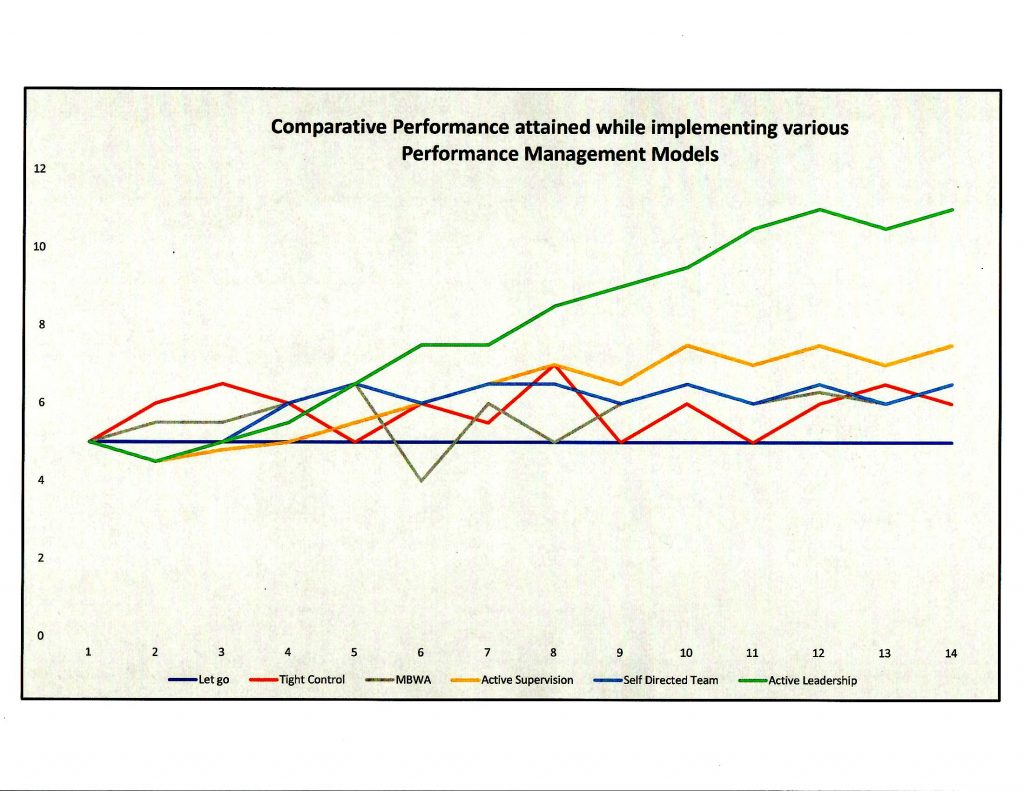A performance management model that makes conventional methods and techniques obsolete.

Performance Management models, techniques and styles have evolved and keep evolving all the time. Our understanding of what makes a performance management model successful is growing slowly, as we often lack the common definition of performance and success.
For simplicity, we will define Performance as the resources (human, material, equipment, infrastructure, capital) used to accomplish the enterprise purpose. We will define success as the attainment of COMMON Goals in a defined greater purpose.
Performance and productivity management models, techniques and styles have evolved greatly over the last 100 years. Over 70 years ago, an industrial engineer, Alexander Proudfoot brought a new model to involve people in the delivery of business execution. His focus was on the realization of the plan laid out by the manager, in command and control environment. With his team, they developed the concepts of ACTIVE SUPERVISION which are still the prominent model. Almost all Productivity and Performance management consultant of today still use the same model geared toward Command and Control or Manage, Measure and Control. This top-down approach is becoming obsolete as it fails the test of employee engagement.
The old performance management models:
- Give orders and let go
- Tight Control
- MBWA (managed by walking around)
- Active supervision
- Self-directed work teams
A new performance management model geared for teams:
ACTIVE LEADERSHIP is different in its application and the results obtained (productivity and performance more than 30% higher than the best results obtained by previous models). See the results on the graph!
The Team Performance Management
How is it different? Our Team Performance Management programs are based on theories and practices of leadership teams and successful companies. The term active leadership takes precedence over the old models of active supervision, in the sense that the supervisory role is refocused on the support and the development of the commitment of the employees of its team. Communications, accountability and the sharing of relevant information are the tools used to get and maintain this commitment from all employees.
If your company operates in a competitive environment, you have a turnover rate of more than 7%, an absentee rate of more than 4%, difficulty recruiting and keeping the workforce; Find out how we can help you and guarantee you results.

